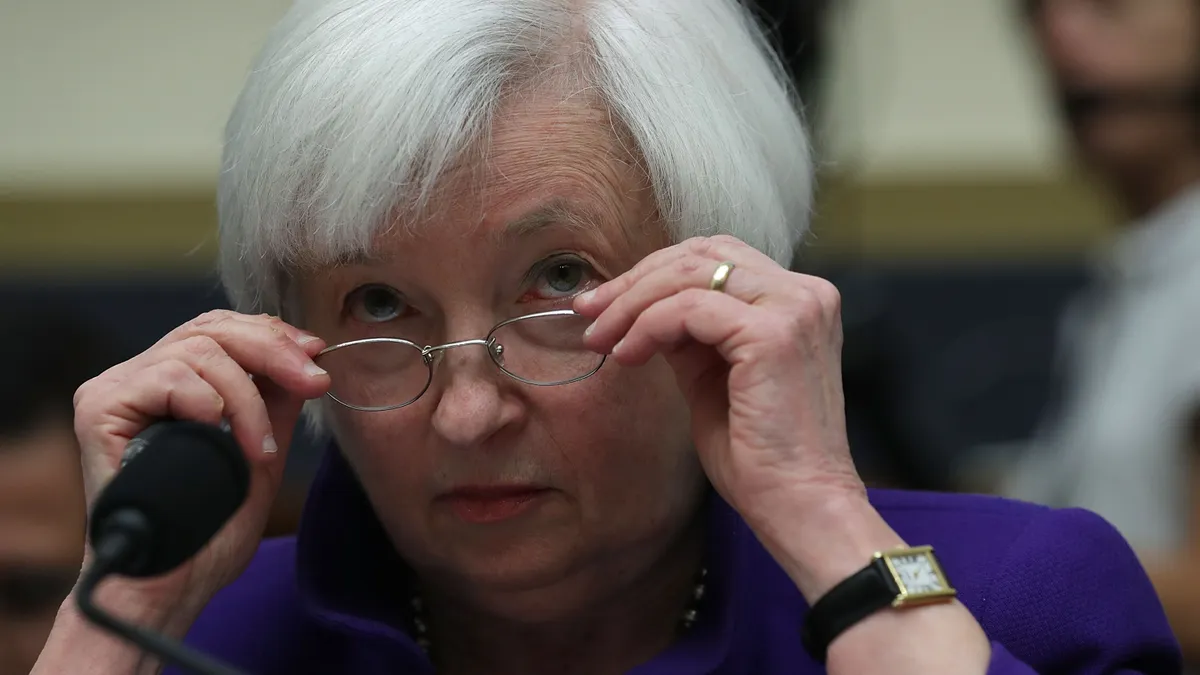Dive Brief:
-
The Federal Reserve Board raised benchmark interest rates by 25 basis points today from a range of 0.25% to 0.50% to a range of 0.50% to 0.75%, a move the Fed had previously hinted would come at its December meeting. It expects to increase rates by 75 basis points in 2017, most likely in three 25-point moves, according to The Wall Street Journal.
-
The Board last raised rates in December 2015, which was the first time since June 2006. Raising rates is largely considered to be a vote of confidence in the economy and a way to manage inflation pressures. The Fed cited "realized and expected labor market conditions and inflation" in its announcement of the increase.
-
This was the Fed’s first meeting since Donald Trump’s largely unexpected presidential win, following his campaign pledges for widespread tax breaks and increased defense and infrastructure spending that analysts have said could increase the national debt considerably.
Dive Insight:
Industry observers say the hike, though expected, won’t have an immediate impact on construction. Dodge Data & Analytics CEO Robert Murray told attendees of the company’s annual executive conference in October that the Fed’s rate increase will gradually dampen economic activity and lead to a slowdown in the overall economy by 2019.
Housing could be more readily affected by a rate increase through the mortgage bond market. In the aftermath of the 2016 presidential election, the average 30-year-fixed-rate mortgage rose 40 basis points — from 3.57% to 3.94% — in response to inflation expectations. The shift, according to Realtor.com Chief Economist Jonathan Smoke, had more than double the impact of the Fed’s expected move on the mortgage markets.
Although mortgage rates are still hovering near historical lows, more than three-quarters of current (76%) and prospective (79%) homeowners see the potential for interest rate increases to be a challenge, according to a report this week from Berkshire Hathaway HomeServices. Those figures are up 16 percentage points and 8 percentage points, respectively, from a reading taken a year ago prior to the Fed’s December 2015 rate increase.
The Fed has kept short-term interest rates low to encourage borrowing and stimulate economic activity. But with the U.S. unemployment rate at 4.6% in November (down from 5% a year earlier) and the GDP growing at a rate of 3.2% in the third quarter (up from 1.4% in the second quarter), the Fed may now be slowly bringing rates back up in a hedge against inflation.
When it announced the rate hike in December 2015, however, the Fed said it planned to raise rates approximately four times in 2016 for a total one percentage point increase. Today’s increase is the first this year.














